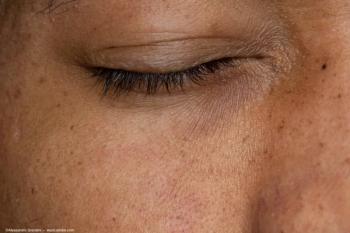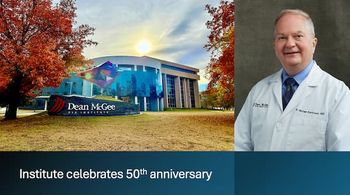
Novel NSAID prodrug safe, effective in cataract surgery
Washington, DC—Results of a clinical trial demonstrate the efficacy and safety of the investigational nonsteroidal anti-inflammatory drug (NSAID) nepafenac 0.1% ophthalmic suspension (Alcon Laboratories) for reducing anterior segment inflammation and minimizing pain after cataract surgery, said Stephen S. Lane, MD, at the annual meeting of the American Society of Cataract and Refractive Surgery.
Washington, DC-Results of a clinical trial demonstrate the efficacy and safety of the investigational nonsteroidal anti-inflammatory drug (NSAID) nepafenac 0.1% ophthalmic suspension (Alcon Laboratories) for reducing anterior segment inflammation and minimizing pain after cataract surgery, said Stephen S. Lane, MD, at the annual meeting of the American Society of Cataract and Refractive Surgery.
He presented the findings from a prospective, randomized, double-masked, vehicle-controlled multicenter study that involved the participation of 21 investigators and enrolled 522 patients, of whom 476 were evaluable.
Patients were randomly assigned 1:1 to treatment with vehicle or nepafenac administered three times a day beginning 1 day preoperatively and continued until day 14 after surgery. Treatment was administered on the operative day with an additional dose given just prior to surgery. Assessments were performed at days 1, 3, 7, and 14.
However, cure rates were also significantly higher in the nepafenac group compared with controls at all previous visits.
In addition, statistically significant differences favoring nepafenac were consistently seen at all visits in the secondary efficacy analyses that assessed proportions of eyes that were treatment failures, had clinically significant inflammation, and were pain-free.
"Nepafenac is a novel prodrug formulation that is rapidly bioactivated in the eye to the potent NSAID amfenac," Dr. Lane, who is in private practice in St. Paul, MN, and clinical professor of ophthalmology, University of Minnesota, Minneapolis. "It accumulates minimally on the ocular surface and is uniformly distributed within the cornea and other intraocular target tissues.
"Therefore, it has the potential as a topical drug to control inflammation throughout the anterior and posterior segment," Dr. Lane explained.
"It may be expected to reduce problems related to postcataract surgery cystoid macular edema, and we look forward to other trials to evaluate the clinical uses of this unique agent," he said.
Better penetration Nepafenac is the amide analog of amfenac. Preclinical studies show that it penetrates the cornea faster and to a greater extent than diclofenac. In the eye it is converted by hydrolases in the iris/ciliary body and retina/choroid to amfenac, and it also has been shown to have more potent activity than diclofenac in the retina/choroid as well as more prolonged activity in those tissues and in the iris/ciliary body.
In the study for reducing pain and inflammation after cataract surgery, treatment failures were defined as eyes with cells Ž grade 3, flare = grade 3, or moderately severe to severe ocular pain. Treatment failure rates throughout the study were low in the nepafenac group, ranging from 4.5% at day 1 to 8.2% at day 14. Among the controls, the treatment failure rate rose from 22.3% at day 1 to 60.9% at day 14, and at each visit, the difference between treatments was statistically significant favoring nepafenac. Clinically significant inflammation was defined as a grading score for cells plus flare Ž 4.
Considering all visits, the percentage of eyes with clinically significant inflammation remained fairly constant in the nepafenac group, ranging between 7.4% and 8.6%. However, among controls, the rate rose from 29.2% on day 1 to 42.5% on day 3, increased further to 52.4% on day 7, and remained at that high level at study completion.
Throughout the study, the majority of patients treated with nepafenac were pain-free-83.1% on day 1 with the rate rising to 93.0% at day 14. In contrast, at all visits, fewer than half of the controls had no pain.
Statistically significant differences were also seen consistently at each visit comparing mean scores for cells plus flare. While that value decreased progressively in the nepafenac group from 2.4 on day 1 to 0.8 by day 14, it remained fairly constant in the range of 3.0 to 3.4 in the control group. There were no ocular adverse events in either group that were considered by the investigators to be related to therapy. A variety of other ocular events were reported, but in the nepafenac group their rates were all 3.2% and, in most instances, were lower than the rates noted among the vehicle-treated controls.
Newsletter
Don’t miss out—get Ophthalmology Times updates on the latest clinical advancements and expert interviews, straight to your inbox.


















































.png)


